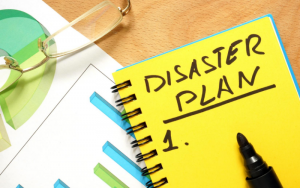 Scientists have long shown that the character of tropical storms can change and quickly turn deadly. While it is never possible to eliminate all damage from a natural hazard, you, as a homeowner, can protect your home and family. To accomplish this, take small and cost-effective steps that could significantly lower your risk. Your family and home deserve the protection that only you can provide.
Scientists have long shown that the character of tropical storms can change and quickly turn deadly. While it is never possible to eliminate all damage from a natural hazard, you, as a homeowner, can protect your home and family. To accomplish this, take small and cost-effective steps that could significantly lower your risk. Your family and home deserve the protection that only you can provide.
Plan
Plan for the worst-case scenario. Sometimes, maintaining a list helps prevent last-minute expenses and unnecessary stress. Consider making a list of kit items for your home and car. Include in your kit, each household members name and phone number. Identify the health conditions or disability-related needs of your group. Put your plans and copies of your financial, insurance, and medical information in waterproof storage containers and discuss your evacuation plan with all family members. Write a list of kit items on the side of empty totes. This will serve as a reminder of what to gather quickly when you are evacuating.Remember that the general rule is to be self-sustaining for a minimum of 72 hours.
Prepare
Print and have ready your evacuation route.
Have cash available in case ATM’s are not working
Gas tanks for refueling a car, if applicable.
Power surges can damage some electronics. Surge protectors, or unplugging all electrical devices, can help protect these items.
A basic emergency supply kit could include the following recommended items:
- A basic emergency supply kit could include the following recommended items:
- Water (one gallon per person per day for several days, for drinking and sanitation)
- Food (at least a several-day supply of non-perishable food)
- Battery-powered or hand crank radio and a NOAA Weather Radio with tone alert
- Flashlight
- First aid kit
- Extra batteries
- Whistle (to signal for help)
- Dust mask (to help filter contaminated air)
- Plastic sheeting and duct tape (to shelter in place)
- Moist towelettes, garbage bags and plastic ties (for personal sanitation)
- Wrench or pliers (to turn off utilities)
- Manual can opener (for food)
- Local maps
- Cell phone with chargers and a backup battery
Act
Stay up to date on the latest weather conditions and evacuation routes, and practice your emergency plan. We can prepare, plan, and protect, but it’s just as important to act by practicing your emergency disaster plan every six months. Understand your evacuating route and practice driving it before the Hurricane is in its path. Take note of shelters in your area and ask if they have services for special needs and pets.
Last but not least, maintain a hopeful outlook. Remember that the federal government, your state government, and many non-governmental disaster services agencies have already mobilized to address the hurricane’s threat.
For more related information, visit us at Disaster Prep. You can also browse government sites such as Ready.gov and the American Red Cross. And for active watches, warnings, or advisories, you can log on to Weather Advisories. These are great resources to help get you started and obtain suggestions for kit contents and other items that you may not have previously considered.
 0
0
